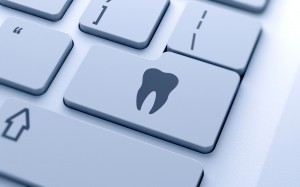
These rapidly growing technologies are forever changing the face of how modern medicine and dentistry work.
by Dr. Nicholas Meyer —
Science fiction-like technological advances for the dental practice, which I term tele-dentistry, may sound far-fetched. Imagine if you could get your real teeth to a dentist from a distant location. Well, we are not there quite yet (maybe 50 percent), but many aspects of tele-dentistry are in place today. Radiographs and photographs of teeth are sent via email. We have the ability to take digital impressions and then send the electronic data cross-country or across town to a laboratory for fabricating a restoration (e.g., a crown or fixed bridge). Insurance claims can be sent seamlessly from the office, meaning ink never meets paper.
From a creature-comfort standpoint, offices regularly offer secure wi-fi access for patients so that our addiction to the Internet and instant communication can be fulfilled easily and readily. It is becoming more common to offer private areas in which an accompanying person can work while waiting for someone who is having a procedure. Additionally, software programs can send e-mail or snail mail appointment reminders to patients.
These rapidly growing technologies are forever changing the face of how modern medicine and dentistry work. I find myself having more Skype™ consultations with patients or prospective patients who are out of town. The benefits are obvious — different time slots available for more flexible scheduling; no faceless phone conferences; the ability to show-and-tell on screen using an educational prop or diagram; and the ability to read the person’s body language.
Furthermore, since the screen can be shared, when specific adjunctive information is necessary to share, it is now readily available. This is an invaluable tool to facilitate an understanding about why a certain treatment or procedure is being recommended. This can give a prospective patient the opportunity to meet and greet the dentist from long distance, without having to make a special trip to the office. In this day and age, the average patient distribution for a dentist has changed such that the informed, focused individual knows no distance or boundaries.
I have personally embraced most of the technological advances that have come to dentistry. They have been a sheer marvel to learn, though a bit vexing at times when something does not go quite right. The use of technology allows practitioners to deliver a higher level of service than previously available to a greater number and more geographically diverse population.
Nicholas Meyer, D.D.S., N.D.(M), D.M.M., is a general dentist in Scottsdale, Ariz., who has a special interest in developmental disturbances of the facial complex that contribute to TMJ, snoring and sleep apnea. www.milldental.com, [email protected] or 480-948-0560.
Reprinted from AzNetNews, Volume 32, Number 5, October/November 2013.





November 20, 2013
Dental, Health, October/November 2013 Issue